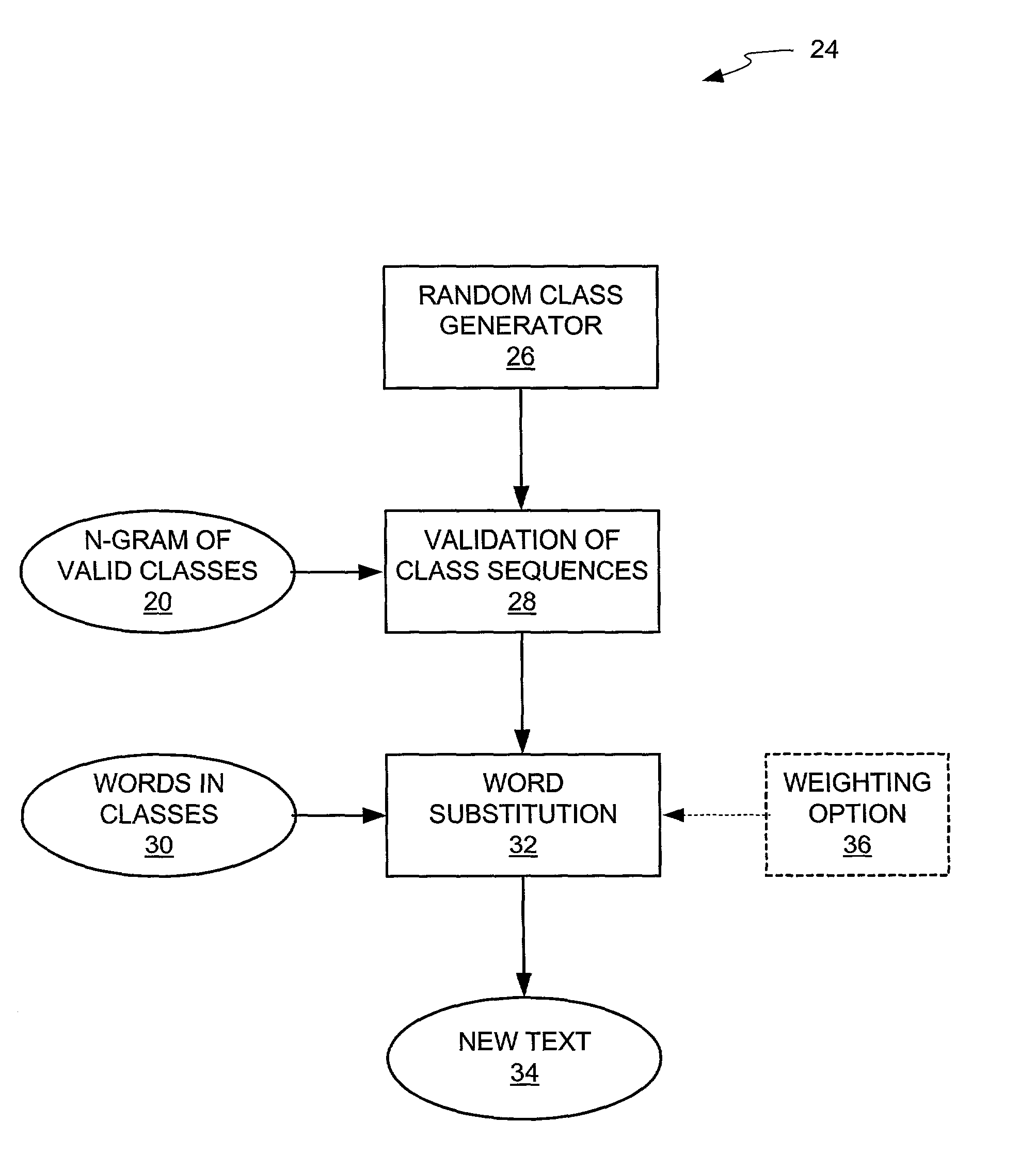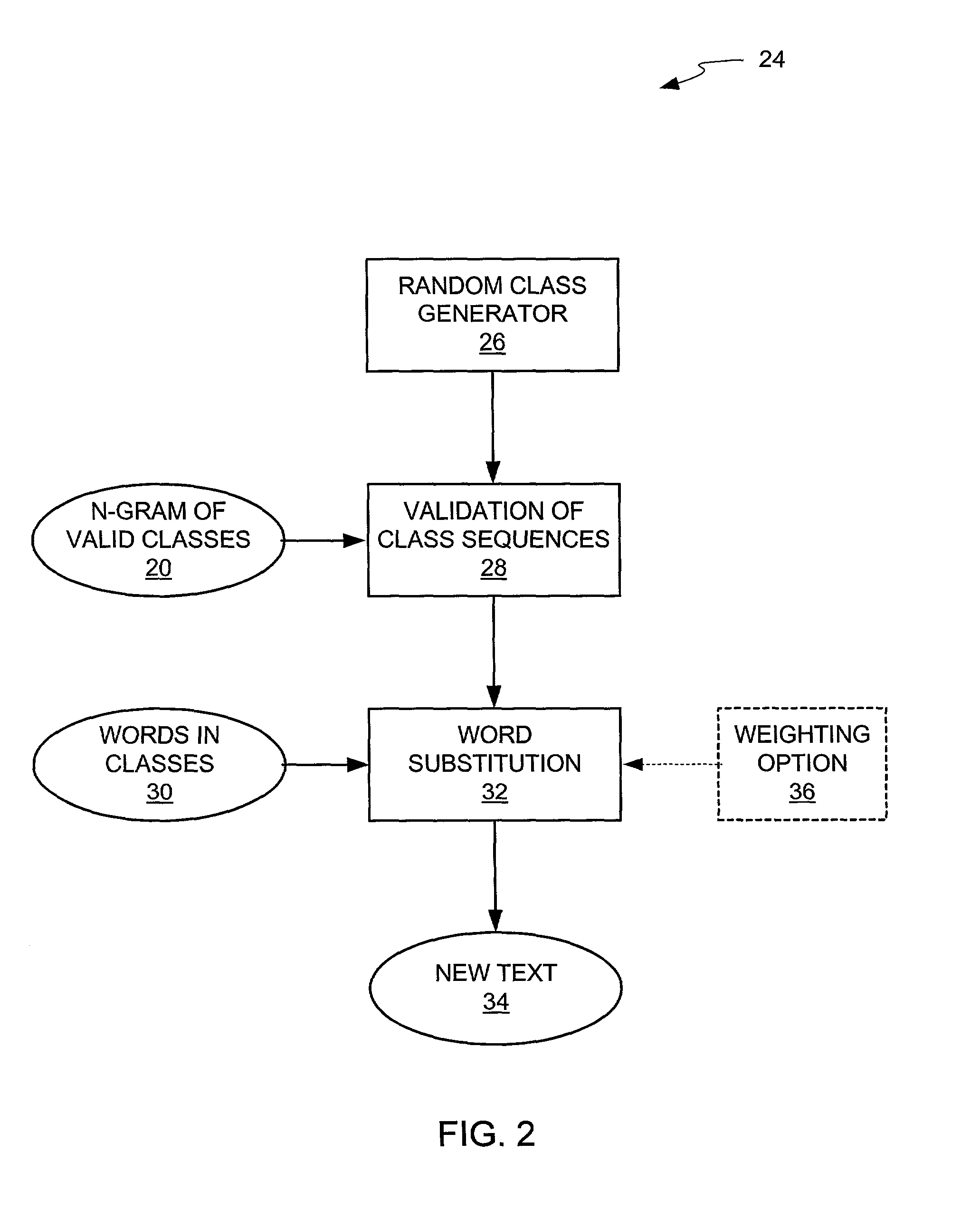Supervised automatic text generation based on word classes for language modeling
- Summary
- Abstract
- Description
- Claims
- Application Information
AI Technical Summary
Benefits of technology
Problems solved by technology
Method used
Image
Examples
Embodiment Construction
[0015]Referring now to FIG. 1, therein is shown a text analysis system 10 of a supervised automatic text generation system for producing an N-gram of classes.
[0016]First, original text 12, in a language for which a speech recognition system is to be developed, is analyzed in a text analyzer 14. The text analyzer 14 decomposes the input original text 12 into words and analyzes the roles tat the words play in the sentences of the language.
[0017]The text analyzer 14 may be a morpho-syntactic analyzer and a description of such an analyzer can be found in “Two-level Morphology: a general computational model for word-form recognition and production” by Koskenniemi, K., University of Helsinki, Department of General Linguistics, Publication 11, 1983, which is incorporated herein by reference thereto.
[0018]The output of the text analyzer 14 provides the nature of each word (noun, verb, etc), a key of its meaning, taken from a thesaurus, and a hint of its role in the phrase.
[0019]An example o...
PUM
 Login to View More
Login to View More Abstract
Description
Claims
Application Information
 Login to View More
Login to View More - R&D
- Intellectual Property
- Life Sciences
- Materials
- Tech Scout
- Unparalleled Data Quality
- Higher Quality Content
- 60% Fewer Hallucinations
Browse by: Latest US Patents, China's latest patents, Technical Efficacy Thesaurus, Application Domain, Technology Topic, Popular Technical Reports.
© 2025 PatSnap. All rights reserved.Legal|Privacy policy|Modern Slavery Act Transparency Statement|Sitemap|About US| Contact US: help@patsnap.com



